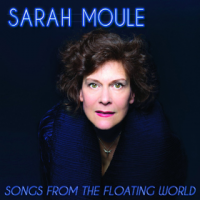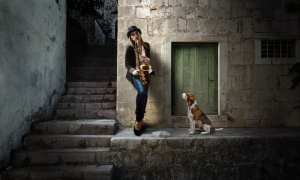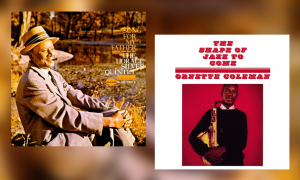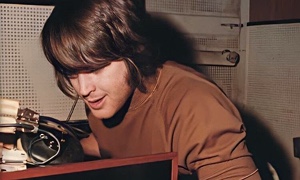Home » Jazz Articles » Building a Jazz Library » Vocal Jazz: 1951-1968
Vocal Jazz: 1951-1968
In the late 1940s, American record companies stumbled upon two ideas that have since become the cornerstone of the industry. First, kids will buy many, many more records than adults. Second, kids don't have particularly good taste in music. Thus emerged a wave of novelty songs qualitatively different (read "inferior") than the fun rhythm tunes of the Swing Era. It doesn't take a musicologist to recognize that when Columbia Records had Frank Sinatra record "Mama Will Bark" with a performer named Dagmar, popular music in America was in trouble.
However, at about the same time, the record companies unveiled a new format, the extended play album (EP). Within a few years, they debuted the 12" long-playing album (LP). A dichotomy quickly emerged: Singles (small 45s had replaced the larger 78s) became the province of novelty songs and early rock & roll (novelty songs with sexual innuendo). The record companies targeted the more-expensive LPs at the adult audience who favored classical music, jazz, and a more sophisticated kind of pop music. For jazz singers, freed from narrow limitations on time and content, the LP created opportunities for new forms of expression.
Everything began to change in 1963 with the arrival of the Beatles. Like the sacking of Rome by the barbarians, the arrival of the Beatles marked the beginning of the end. The reasons behind the profound social and economic upheavals associated with the Baby Boom generation are complex and a subject for another time and place. However, the results for jazz were catastrophic. Ironically, the most anti-establishment generation in history transformed the music business into a rigid, narrowly formatted, corporately controlled, commercially driven industry. A new musical culture unable to distinguish between amateurism and authenticity emerged. Jazz singers continually lost ground until many of them could no longer support themselves.
Still, we can be grateful for these years when good records seemed to flow in an endless supply. Distilling such a prolific era into a handful of albums is a difficult task made nearly impossible by the close connections that existed at the time between jazz and pop music. An argument can be made that Frank Sinatra and Peggy Lee, both of whom were jazz-influenced pop singers rather than jazz singers, had as much of an impact on the development of vocal jazz as any of the singers listed below. However, for space reasons we have limited our selection to singers working in the vocal jazz idiom during these years. So with due respect to the missing masters and the overlooked masterpieces, these are the records that explain why jazz singing has become such an enduring and timeless art form and why this was its greatest era—at least so far.
 | Sarah Vaughan Sarah Vaughan (1954) With Billie Holiday and Ella Fitzgerald, Sarah Vaughan completes the Holy Trinity of vocal jazz. Vaughan had an ear that could pick up every nuance of a chord sequence and a voice capable of executing any musical idea that came to her fertile imagination. This small group recording, featuring trumpeter Clifford Brown and tenor saxophonist Paul Quinichette, finds Sarah taking her time on a collection of slow to mid-tempo standards. "Lullaby of Birdland" and "Embraceable You" are textbook examples of everything that vocal jazz can and should be. |
 | Dinah Washington For Those In Love (1955) "The Queen of the Blues" liked to say that she could sing anything and during her twenty-year career (1943-1963), she pretty much did. As a result, her influence can still be detected not only in blues and jazz singing, but also in rock, soul, R&B and pop singing. Oddly enough, Washington never made an album that quite matched her protean talents. However, For Those In Love is the perfect record to begin an exploration of the jazz side of Washington's impressive legacy. |
 | June Christy The Misty Miss Christy (1956) As she often pointed out herself, June Christy never had the virtuoso technique of Ella Fitzgerald. Yet she sang with so much creativity and insight that she has rightly come to be regarded as one of the greatest jazz singers of any era. Her LPs for Capitol remain among the most impressive series of vocal jazz albums ever recorded. Christy continually challenged herself as an artist often singing difficult material in unorthodox settings. Vocal jazz fans are pretty much split over whether Something Cool or The Misty Miss Christy is June's finest album. You'll want to get both, but start here if only for the definitive vocal recordings of Ellington's "Day Dream" and Monk's "Round Midnight." |
 | Anita O'Day Pick Yourself Up (1956) Almost from the very beginning of her career, which took off during her tenure with Gene Krupa's band, Anita O'Day thought of herself as one of the musicians. Although she could caress a lyric, it was O'Day's great harmonic imagination and willingness to improvise without a net that made her such a fascinating artist. The stage was O'Day's natural environment (check out her performance in the classic documentary Jazz on a Summer's Day), but when given proper backing, as on Pick Yourself Up, she could also generate fireworks in the studio. |
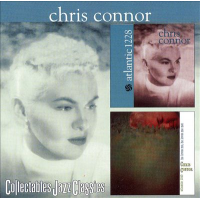 | Chris Connor Chris Connor / He Loves Me, He Loves Me Not (1956) With her husky voice, daredevil sense of time and willingness to take risks, Chris Connor has long been one of the most addictive of jazz singers. Her innovative series of albums for Atlantic captured the singer in her early prime and showcased her in a variety of settings from small groups to big bands to string orchestras. This CD pairs her first two Atlantic albums although Chris Connor has been slightly abridged to accommodate CD playing time. The eponymous LP featured Connor with a quartet (John Lewis, Oscar Pettiford, Barry Galbraith and Connie Kay) and two large ensembles arranged by Ralph Burns. Burns also crafted the stunning orchestral charts for He Loves Me, He Loves Me Not, one of the finest ballad albums of the era. |
 | Lambert, Hendricks & Ross The Hottest New Group in Jazz (1959-1962) Vocalese, the art of putting lyrics to instrumental solos, reached its apogee with the vocal trio formed by Dave Lambert, Jon Hendricks and Annie Ross. Although Hendricks & Ross are very good jazz singers in their own right, their solo work has never matched the heat generated by LH&R at their peak. This 2-CD set gathers together the three great albums the group recorded for Columbia Records, The Hottest New Group in Jazz (1959), Sing Ellington (1960) and High Flying (1961) along with previously unreleased material. This music still sounds impossibly hip. |
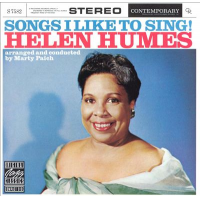 | Helen Humes Songs I Like to Sing (1960) All three of Helen Humes's albums on Contemporary are essential, but Songs I Like to Sing contains the definitive versions of some of the former Basie vocalist's favorite and most frequently recorded songs. Eight songs feature Humes with a 14-piece band arranged by Marty Paich. The remaining four tracks, including a definitive "Imagination," find this always-remarkable singer backed by a rhythm section, a string quartet and the tenor saxophone of Ben Webster. |
 | Billy Eckstine No Cover, No Minimum (1960) Critics tend to remember Mr. B. for being the leader of the first bebop big band in the 1940s or for his role in shattering stereotypes of black American men. What they often overlook is that Eckstine was a very good jazz singer whose rich baritone and distinctive vibrato influenced a number of great jazz singers and produced scores of less accomplished imitators. The live No Cover No Minimum captures some of the loosest and most arresting singing Eckstine ever committed to record. |
 | Mel Torme Swings Shubert Alley (1960) With the notable exception of Ella Fitzgerald, Mel Torme may very well have been the most technically accomplished jazz singer of the era. He made a number of fine albums with arranger Marty Paich, but Swings Shubert Alley is the pick of the lot. Torme navigates Paich's complex charts with effortless virtuosity and just a bit of "look Mom, no hands" showmanship. |
 | Ella Fitzgerald The Complete Ella in Berlin: Mack the Knife (1960) Simply put, Ella Fitzgerald is the most extraordinary singer jazz has ever produced. Everything the First Lady of Song recorded for Verve during these years -the Song Books, the studio albums, and the live recordings -remains required listening for any vocal jazz fan. However, The Complete Ella in Berlin provides a microcosm of her artistry for any listener who wants to understand why Fitzgerald deserves her legendary status. |
 | Carmen McRae Sings Lover Man and Other Billie Holiday Classics (1961) Carmen McRae perfected the ideal archetype for modern jazz singing. She married the improvisatory language of bop with a profound respect for the power of words. Few jazz singers have matched either McRae's ability to deconstruct a melody or her gift for exploring the meaning of a lyric. Fewer still have come anywhere close to her skill at doing both at the same time. McRae made several good records during the early years of her recording career, but this Billie Holiday tribute was something special. Lady Day had been both McRae's professional inspiration and her close friend, which gives the album a weight and substance sadly missing from most of the tribute CDs currently flooding the marketplace. |
 | Johnny Hartman John Coltrane and Johnny Hartman (1963) One of the most treasured ballad albums in the history of jazz. Rather than tugging the easy heartstring, Hartman's smooth baritone peels away the lyrics in layers. He gradually exposes the wounded heart beneath the words while Coltrane's playing supplies the power and raw emotion. Almost forty years later, these performances of "Lush Life," "My One and Only Love," "They Say It's Wonderful" and "You Are Too Beautiful" remain unsurpassed. |
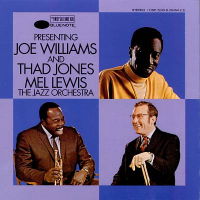 | Joe Williams Presenting Joe Williams with the Thad Jones-Mel Lewis Jazz Orchestra (1966) Having risen to fame with the Count Basie Orchestra, Williams knew a thing or two about how to work in a big band setting, and he sounds completely at home with the tightly-swinging Jones-Lewis ensemble. The songs are mostly blues-oriented with a bit of then-contemporary material and some Ellington thrown into the mix (including a stately "Come Sunday"). When the singer and the band come roaring together, as on "Smack Dab in the Middle," there is nothing to do but get out of the way. |
Tags
PREVIOUS / NEXT
Support All About Jazz
 All About Jazz has been a pillar of jazz since 1995, championing it as an art form and, more importantly, supporting the musicians who make it. Our enduring commitment has made "AAJ" one of the most culturally important websites of its kind, read by hundreds of thousands of fans, musicians and industry figures every month.
All About Jazz has been a pillar of jazz since 1995, championing it as an art form and, more importantly, supporting the musicians who make it. Our enduring commitment has made "AAJ" one of the most culturally important websites of its kind, read by hundreds of thousands of fans, musicians and industry figures every month.




